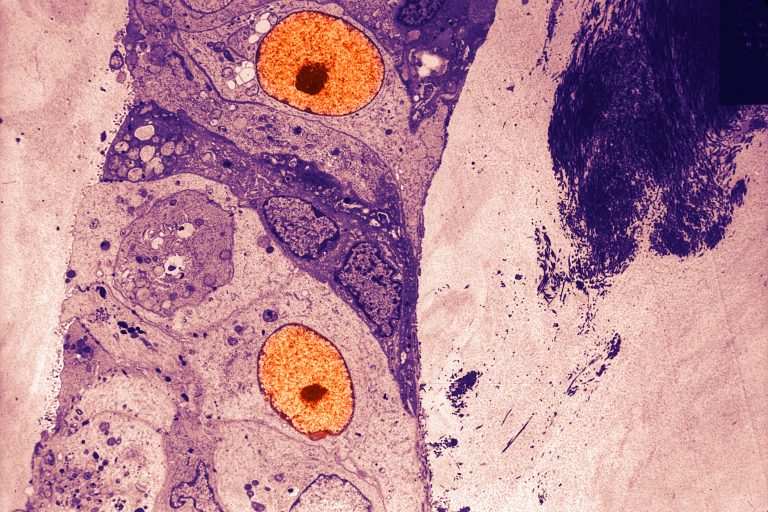
A pair of recent studies reinforces the idea that prolactin may be a major contributor to breast cancer development and could be a target for new drugs against multiple forms of the disease.
VCU Massey Cancer Center researcher Charles Clevenger, MD, PhD, and his lab discovered a new, altered form of the prolactin receptor called the human prolactin receptor intermediate isoform (hPRLrI) that appears to directly drive breast cancer. The researchers observed that this modified version of the prolactin receptor interacted with other forms of the receptor to turn benign breast cells into malignant ones, and the presence of hPRLrI in breast cancer cells was associated with triple negative breast cancer, a rapid rate of cell reproduction and poor outcomes.
“Both immunohistochemical breast cancer tissue microarray data and RNA sequencing analyses using The Cancer Genome Atlas (TCGA) identified that higher hPRLrI expression associates with triple-negative breast cancer. These studies indicate the hPRLrI, when expressed alongside hPRLrL, participates in mammary transformation, and represents a novel oncogenic mechanism,” they write.
This study was published in npi Breast cancer.
The researchers point out that while much is known about prolactin’s role in normal mammary gland development, there is debate about its role in malignancy development. For example, although epidemiologic studies suggest high prolactin levels are associated with a higher risk or breast cancer, patients with hyperprolactinemia are not at higher risk for the disease.
“This research challenges the dogma that prolactin only functions in milk production and highlights the unique discovery that the hormone can contribute to breast cancer,” said Clevenger, who is the associate director for precision oncology at Massey as well as chair of the Department of Pathology at the VCU School of Medicine. “By understanding how the prolactin receptor correlates to breast cancer, novel therapeutic and prognostic agents can be developed to effectively treat the disease.”
Clevenger said these findings support the argument that future approaches in drug design may need to specifically target hPRLrI, and could ultimately inform advanced diagnostic applications for breast cancer as well.
In a separate study, published in the May issue of Endocrinology , Clevenger’s group inhibited tumor growth in preclinical models of ER-positive breast cancer using an HDAC6 inhibitor, a drug that blocks a protein associated with prolactin.
In this research, the scientists found that the prolactin-regulating function of Stat5 is dually dependent on the enzyme histone deacetylase-6 (HDAC6) and the gene HMGN2. Their work also showed that the estrogen receptor (ER)was highly and almost exclusively interactive with Stat5 at sites where HDAC6 and HMGN2 were also present. This suggests that both the estrogen receptor and prolactin receptor can cooperate through the activation of Stat5 to initiate the development of breast cancer. Treating ER-positive breast cancer cells with an HDAC6 inhibitor drastically hindered tumor progression.
“Global analysis of gene expression again revealed that prolactin is closely associated with breast cancer growth and could be subdued by treatment with an HDAC6 inhibitor,” Clevenger said.
Clevenger has done much research on whether prolactin might have implications in the growth and progression of breast tumors. In future studies, he plans to further test and develop breast cancer drugs using prolactin as a primary target.













